ART APPRECIATION #3
1/25
There's no tags or description
Looks like no tags are added yet.
Name | Mastery | Learn | Test | Matching | Spaced |
|---|
No study sessions yet.
26 Terms
PREHISTORIC ART
A term that refers to Stone Age, Paleolithic and Neolithic art and artifacts (before recorded history)
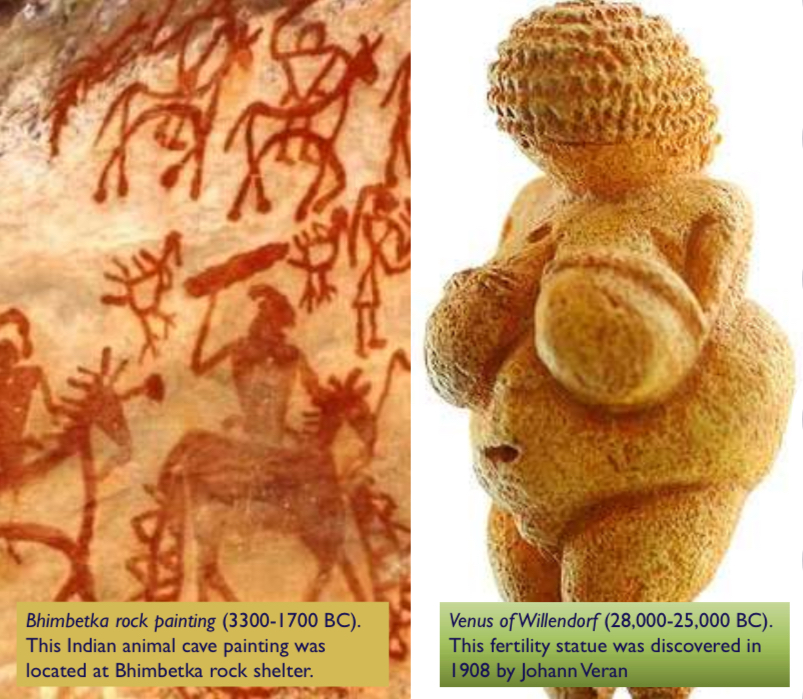
ANCIENT GREEK ARTS
Archaic Period
Classical Period
Hellenistic Period
ACH
ARCHAIC PERIOD
Arts were influenced by the earlier civilization of Mesopotamia and Egypt like the use of geometric art in pottery
Example:
Kouros (nude male figure of athlete)
Kore (fully clad female figure)
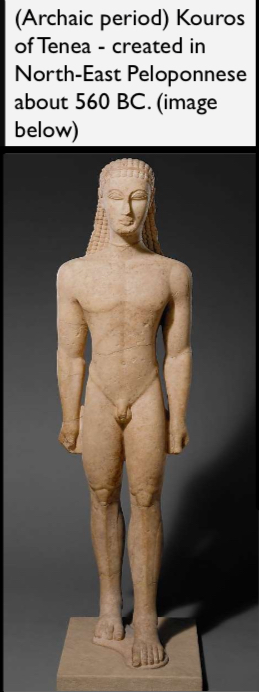
CLASSICAL PERIOD
Considered as the remarkable civilization of Ancient Greek, the Golden age of Athens
Achieve the aesthetic ideals (emphasize forms and follow the principles of design) and sculpture evolve from the frontal and rigid of Kouros (kouroi)
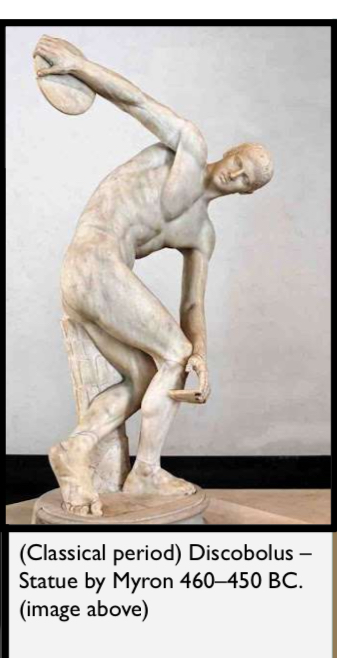
HELLENISTIC PERIOD
The end of the golden age of Athens, the time of Alexander the Great (338 BC) who conquered the Greek cities
Sculptures are influenced by the Oriental and the political instability which brings new set of aesthetic ideals particular in paintings and sculptures
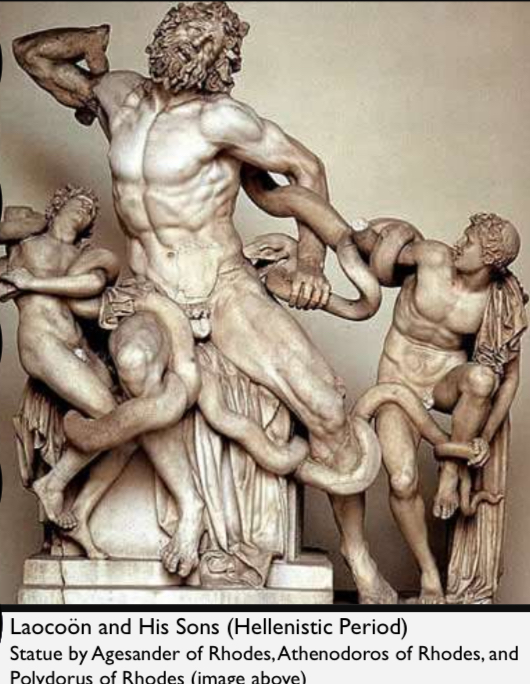
ROMAN ARTS
Such as sculptures and architectures imitated the Greek forms and techniques
New artistic subjects like:
1. Still Life
2.Landscape
3. Architectural motifs
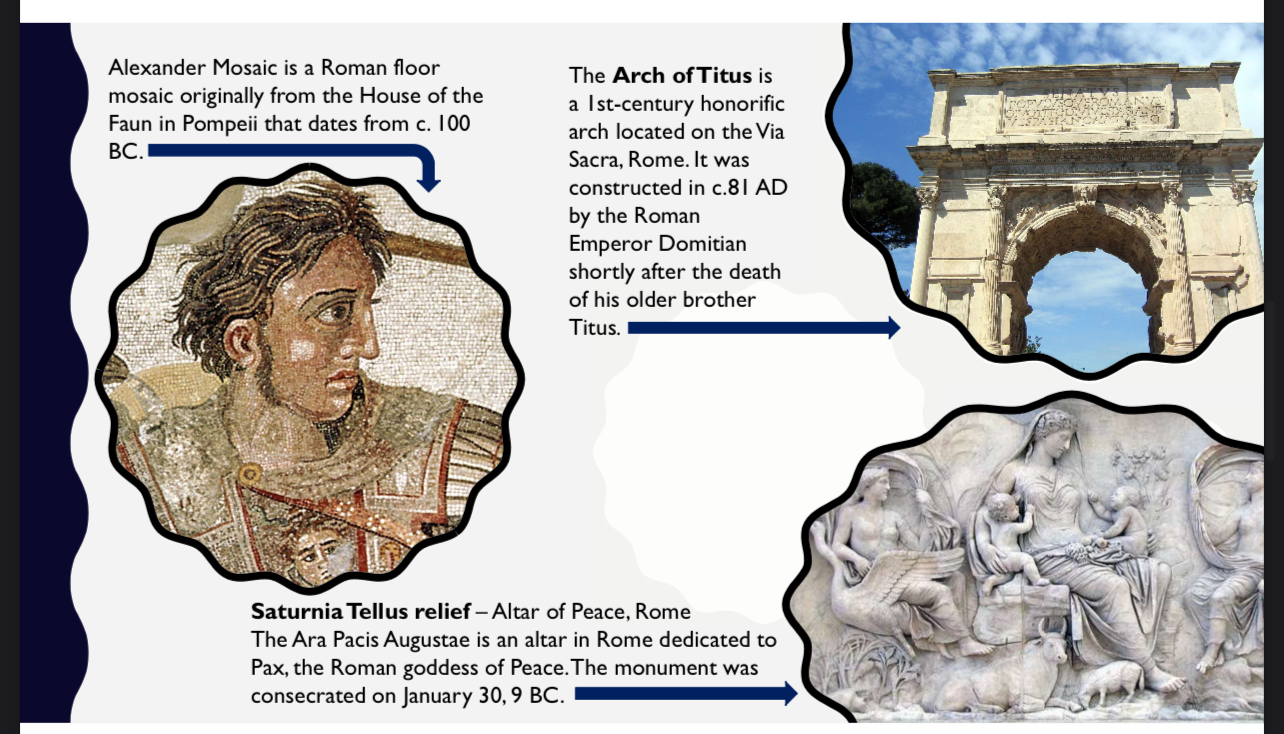
EARLY CHRISTIAN ARTS
Also known as Paleo-Christian art from the beginnings of Christianity until about the early 6th century
Symbolism, Catacomb painting, Mosaic and Frescoes, Adaptation of Roman Style
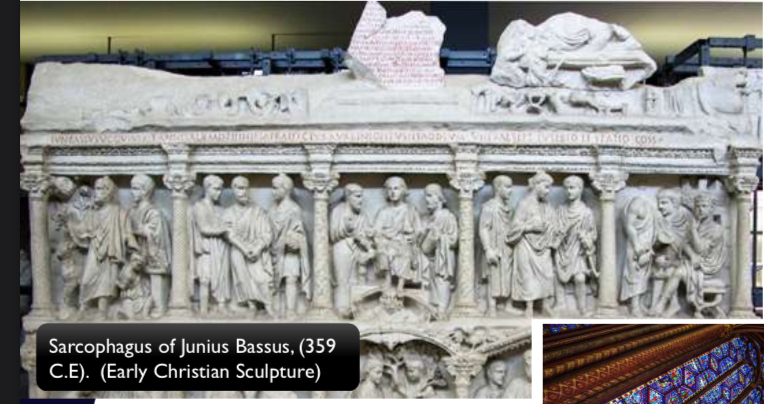
GOTHIC ARTS
Developed out of the Romanesque arts in mid-12th century
Emphasized religion as the subject of arts and it was renowned for the use of stained glass (mosaic)
Sculptures, panel paintings stained glass, fresco and illuminated manuscripts were the primary media in Gothic period
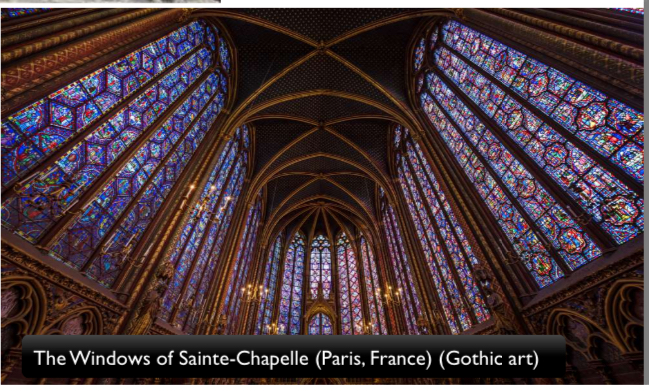
RENAISSANCE ARTS
Underscored the dominance of man (homocentric)
“Man as the measure of all things”
Arts centered on person’s thoughts, feeling and imaginations
Its artistic standards derived from the ideals of classicism
The subjects of art in this period remained religious by nature and the ideal man, “jack-of-all-trade” was the center of attraction
Example:
The creation of Adam (Michaelangelo)
Mona Lisa (Leonardo Da Vinci)
Girl with a Pearl Earring (Johannes Vermeer)
The School of Athens (Raphael)
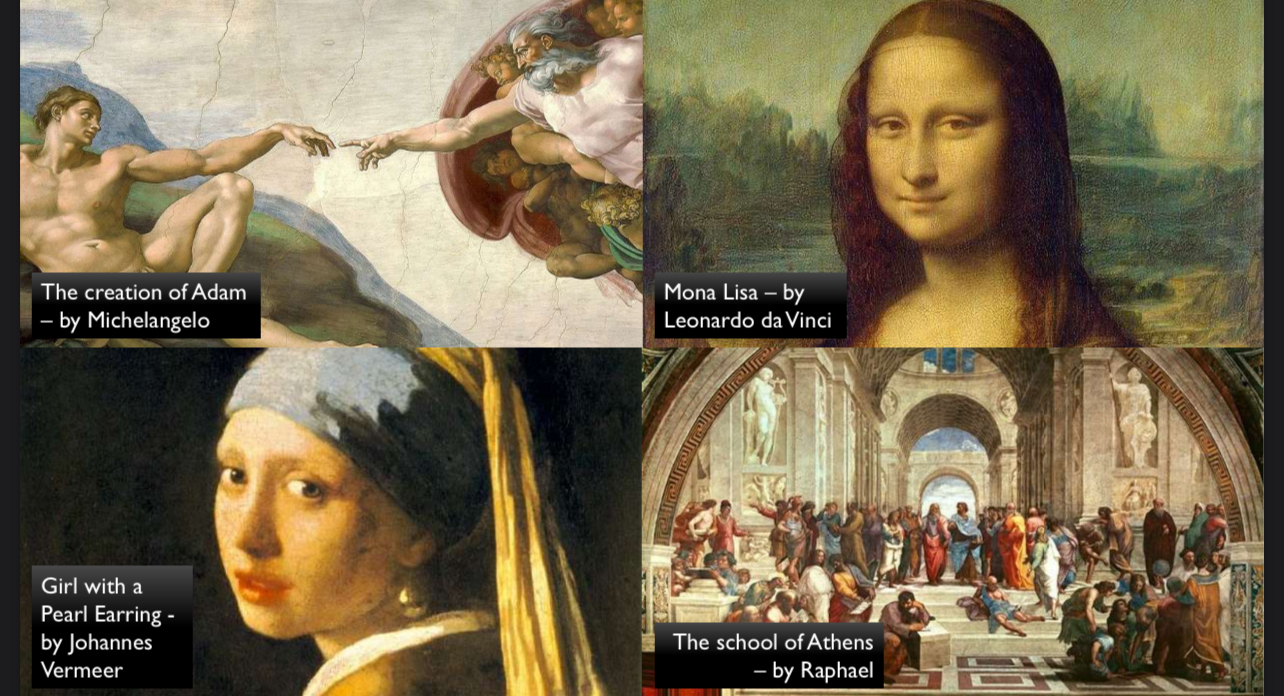
MANNERISM ARTS
Refers to the period of European arts that emerged from the later years of the Italian High Renaissance around 1520 and lasted about 1580 in Italy
This 16th century period of arts were characterized by unusual effects of scale, lighting, perspective, and the use of bright, often lurid colors
Example:
Carmignano Visitation (Pontormo)
Cherub Playing a Lute (Rosso Florentino)
The Flight into Egypt (Jacobo Bassano)
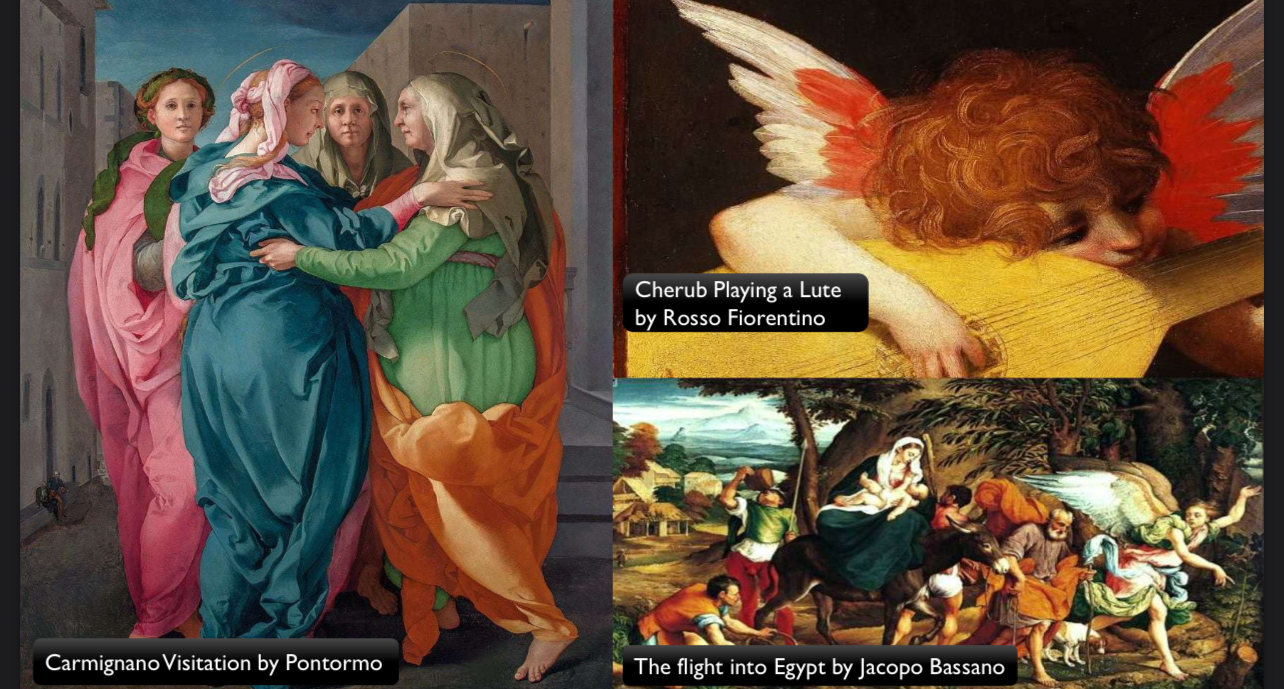
BAROQUE ARTS
Refers to the period of European arts of the 17th and 18th centuries that follows mannerism and it is distinct with ornate detail
Characterized by its dramatic, exuberant and grandiose qualities
Example:
David and Goliath (Caravaggio)
Judith slaying Holofernes (Artemisia Gentileschi)
The taking of Christ (Caravaggio)
The entombment of Christ (Caravaggio)
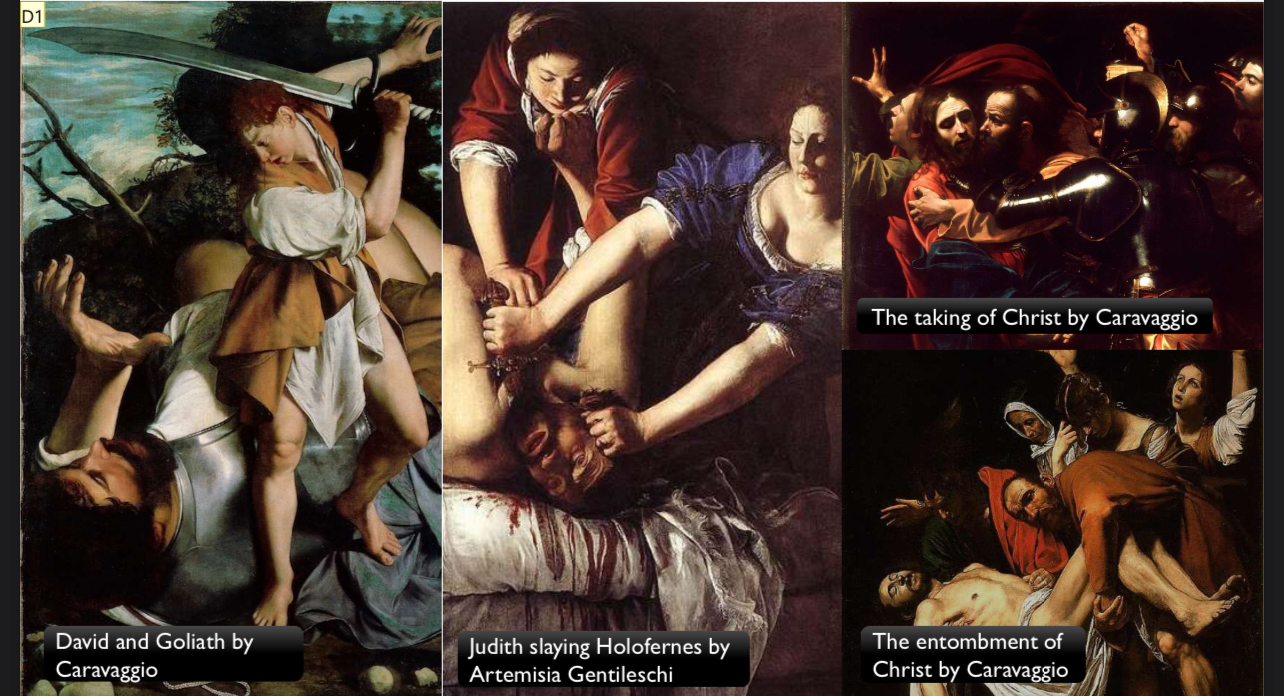
ROMANTICISM ARTS
An art movement originated in the late 18th century that emphasized inspiration, subjectivity and primacy of individual
Creation against the order and restraint of classism and neoclassicism and rejection of rationalism
Incorporates the struggles for freedom and equality and the promotion of justice as spurred by the idealism of French Revolution
Example:
Liberty Leading the People Painting (Eugene Delacroix)
The Barque of Dante (Eugene Delacroix)
The Raft of the Medusa Painting (Theodore Gericault)
The Nightmare Painting (Henry Fuseli)
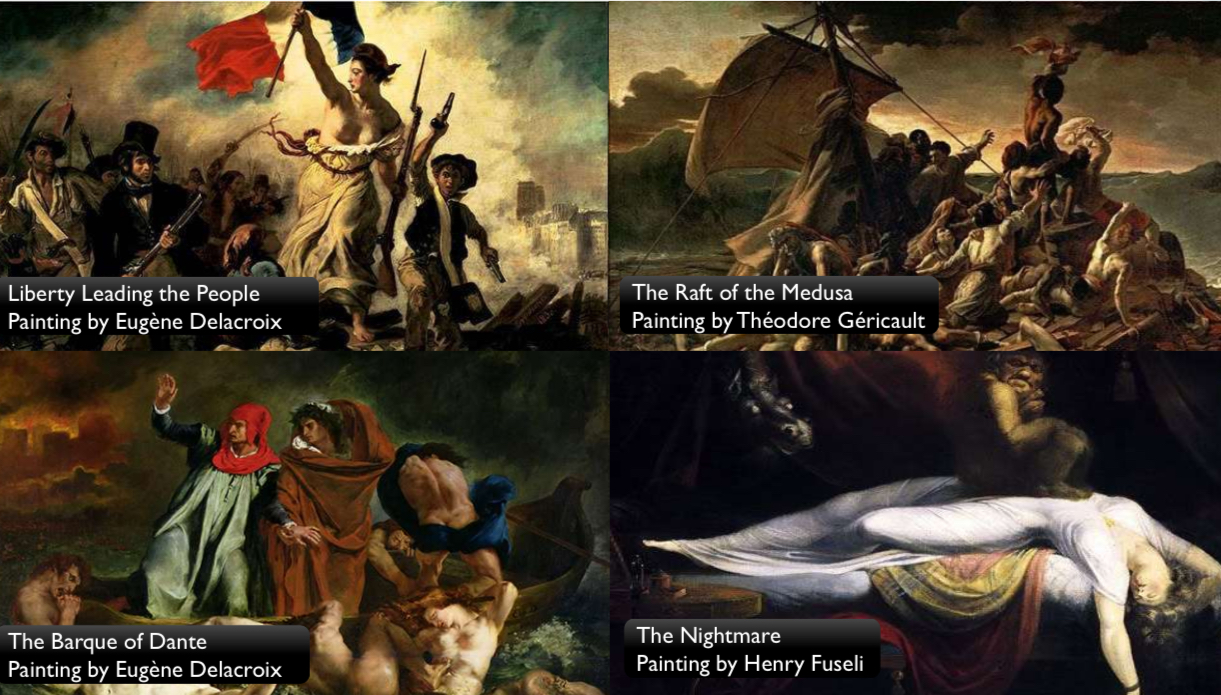
MODERN ART
Impressionalism
Pointillism
Fauvism
Expressionism
Cubism
Futurism
Surrealism
Dadaism
IMPRESSIONISM
A style or movement in painting originating in France in the 1860s
Characterized by a concern with depicting the visual impression of the moment especially in the term of the shifting effect of light and color
Example:
Woman with a Parasol - Madame Monet and Her
Son painting by Claude Monet
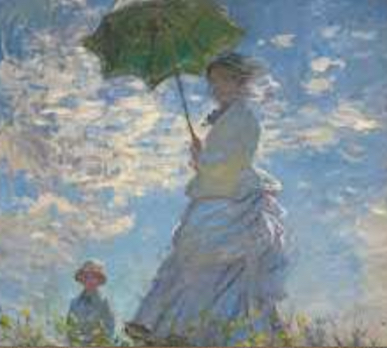
POINTILISM
Developed by George Seurat pointillism a technique of neo-impressionist painting using tiny dots of various pure colors which become blended in the viewer’s eye
The English Channel at Grandcamp - painting by Georges Seurat
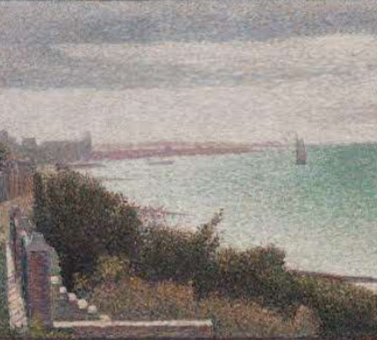
FAUVISM
From French fauvisme (fauve) refers to a wild beast a style of painting with vivid expressionistic and non-naturalistic use of color that flourished in Paris 1905
Example:
Starry Night (Van Gogh)
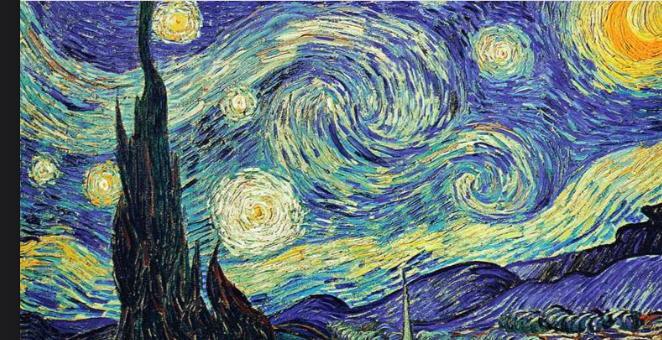
EXPRESSIONISM
A style of painting,music, or drama in which the artist or writer seeks to express emotional experience rather impressions of the external world
Example:
Evening on Karl Johan Street Painting
by Edvard Munch
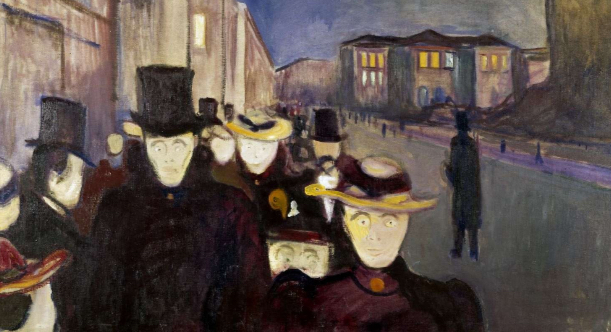
CUBISM
An early 20th century style and movement in the field of visual arts, especially in painting.
Emphasizes the use of simple geometric shapes, interlocking planes, and later, collage.
Example:
Pablo Picasso, "Three Musicians", 1921
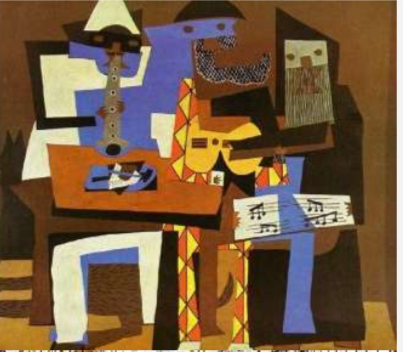
FUTURISM
Was an avant-garde art movement that originated in Italy in the early 20th century.
It emphasized themes of dynamism, speed, technology,and modernity
Example:
The City Rises - Umberto Boccioni
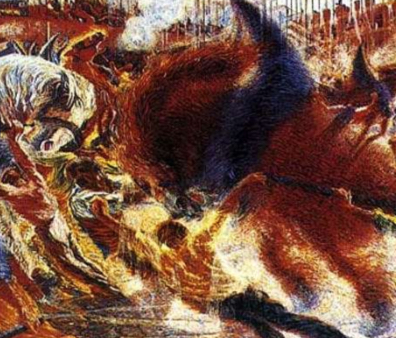
SURREALISM
A 20th century avant-garde movement in art and literature that sought to release the creative potential of the unconscious mind (like the irrational juxtaposition of images)
Example:
The Son of Man, Rene Magritte
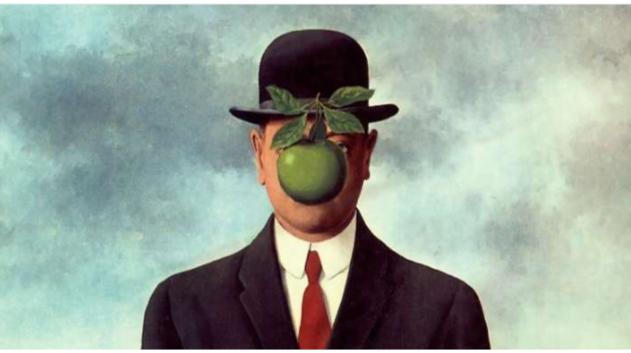
DADAISM
From French Dada, literally means hobbyhorse (rocking horse). An early 20th- century international movement in art, literature, music, and film that rejected traditional artistic and social norms, embraced the absurd and illogical, and favored techniques like montage, collage, and using everyday objects as art.
Example:
L.H.O.O.Q by Marcel Duchamp, (1919
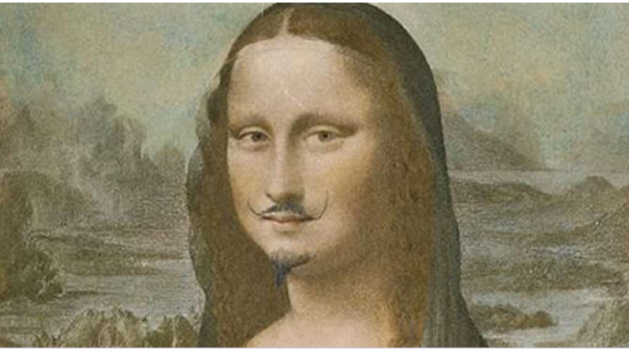
CONTEMPORARY ARTS
Pop Art
Word Art
Conceptual Art
Performance Art
POP ART
Both modernist and contemporary art which is based on modern popular culture and mass media, especially as a critic or ironic comment on traditional fine arts values
It started out by depicting a more up-to-date reality, using images of film-stars and other celebrities, as well as mass-made consumer goods.
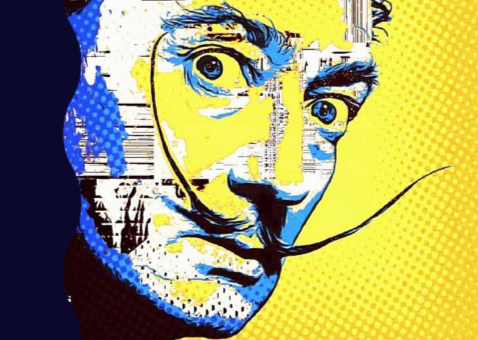
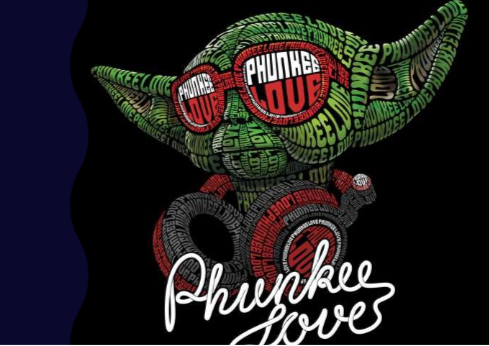
WORD ART
Brand new form of painting or sculpture which used text-based imagery
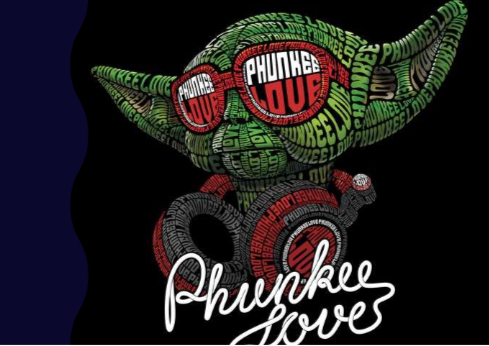
CONCEPTUAL ART
Is postmodernist art movement founded on the principle that art is a concept rather than a material object (Dada arts/ Marcel Duchamp)
Art in which the idea presented by the artist is considered more important than the finished product (essential component)
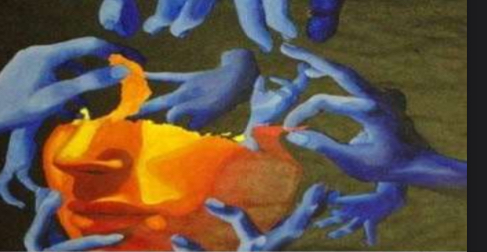
PERFORMANCE ART
Emerges from America and Europe, an experimental art form inspired by conceptual art.
It is an art form that combines visual art with dramatic performance. It includes events and happenings by visual artist, poets, musicians, film makers, video artist, and others